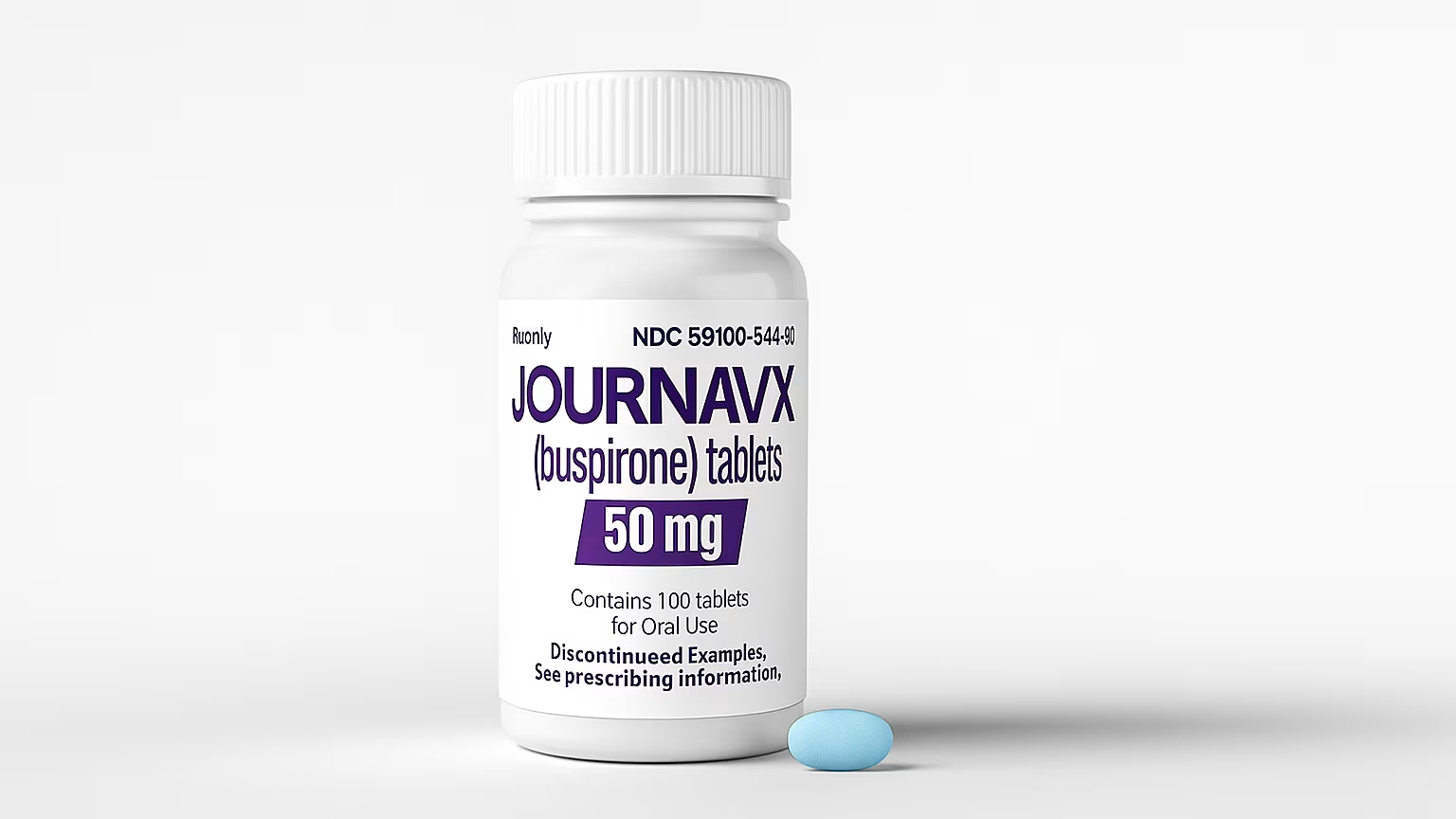Pain is one of the most common reasons people visit doctors. For decades, the medical system has relied on opioid medicines to manage severe pain after surgery or injury. While opioids work well, they also come with high risks: addiction, dependence, overdose, and long-term harm. Because of this, scientists have been searching for safe, non-opioid alternatives that can reduce pain effectively without causing addiction.
In January 2025, the U.S. Food and Drug Administration (FDA) approved a new medicine called suzetrigine, sold under the brand name Journavx. This was a historic decision because it was the first new type of oral non-opioid painkiller in more than 20 years. Doctors and patients see it as a big step forward in pain management.
Table of contents
What Is Journavx (Suzetrigine)?
Journavx is the brand name for suzetrigine, a new prescription medicine developed by Vertex Pharmaceuticals. Unlike opioids, it does not work on the brain’s opioid receptors. Instead, it works by blocking a sodium channel called NaV1.8, which plays a major role in sending pain signals from the body to the brain.
By stopping these signals at the source, Journavx helps control moderate to severe acute pain. This makes it especially useful after surgery or physical injuries when pain levels are high.
The FDA approved Journavx in January 2025, after years of research and clinical trials. Many experts see this approval as one of the most important advances in modern pain medicine.
How Does Journavx Work?
Most common painkillers like ibuprofen or acetaminophen reduce pain by lowering inflammation or changing how the brain processes pain. Opioids directly affect brain receptors, which is why they are powerful but addictive.
Journavx is different. It blocks the NaV1.8 sodium channel in the peripheral nervous system (the nerves outside the brain and spinal cord). This channel is heavily involved in transmitting pain messages to the brain. By blocking it, Journavx interrupts pain signals before they even reach the brain.
This unique action means Journavx can:
- Reduce pain without the risk of opioid addiction
- Avoid common opioid side effects like sedation, constipation, and respiratory depression
- Help doctors create safer pain treatment plans
Also Read: Unisom Review: Benefits, Side Effects, and Real User Feedback
What Is Journavx Used For?
At present, Journavx is approved only for short-term use in adults with moderate to severe acute pain. Doctors usually prescribe it after:
- Surgeries (like abdominal surgery or bunion surgery)
- Accidents and injuries that cause strong pain
Clinical trials showed that patients who took Journavx after surgery experienced pain relief comparable to those who received opioid painkillers. However, Journavx did not show superior results over opioids—it worked about the same but with fewer risks of dependence.
Right now, it is not a replacement for opioids in every case. Instead, doctors may use Journavx as part of a multimodal pain management plan, where different medicines are combined to keep pain under control while lowering opioid use.
Journavx and Chronic Pain: What We Know So Far
One of the most common questions people ask is:
“Can Journavx be used for chronic pain?”
As of today, the answer is no. Journavx is not approved for long-term or chronic pain conditions such as:
- Arthritis
- Diabetic neuropathy
- Sciatica
- Fibromyalgia
- Cancer-related pain
Some early studies are testing whether suzetrigine could help with chronic pain, but results have been mixed. The main concern is whether the medicine will stay safe and effective with long-term use. Until more research is done, doctors will prescribe Journavx only for acute, short-term pain.
Journavx Side Effects
Like all medicines, Journavx can cause side effects. Most are mild, but some can be serious.
Common Side Effects
- Itching or rash
- Nausea or vomiting
- Headache
- Dizziness or blurred vision
- Muscle spasms
- Tiredness or weakness
Less Common but Serious Side Effects
- Confusion or mood changes
- Unusual bruising or bleeding
- Irregular heartbeat or chest pain
- Severe allergic reactions (swelling, breathing difficulty, hives)
- Vision problems such as eye pain or sudden changes in sight
Safety Warnings
- Avoid grapefruit or grapefruit juice, which can interfere with how the drug is processed in the body.
- Do not combine Journavx with certain strong medicines (CYP3A inhibitors), as they may cause harmful interactions.
- Always take it exactly as prescribed, and never share it with others.
If you notice any serious side effects, you should seek medical help right away.
Managing Side Effects
Most patients tolerate Journavx well, but if you experience itching, rash, or mild nausea, there are ways to reduce discomfort:
- Use fragrance-free lotions or cool compresses for itching.
- Eat small, light meals if nausea occurs.
- Stay hydrated and rest if dizziness appears.
Always inform your doctor if side effects become bothersome or if you feel anything unusual.
Journavx Reviews: What Patients Are Saying
Since Journavx is a new medicine, reviews are still limited. However, reports from clinical trials and early patient experiences are promising.
Many patients say that Journavx:
- Controlled their pain effectively after surgery
- Allowed them to remain alert and functional (unlike opioids that cause sleepiness)
- Reduced their need for opioid rescue medications
One patient recovering from abdominal surgery said they were able to move around and return to daily activities faster than expected. Another trial participant shared that while the pain relief was similar to opioids, they felt more “clear-headed” with Journavx.
Doctors also highlight that this medicine may be especially useful for people who cannot safely take opioids, such as those with breathing problems or a history of substance abuse.
Cost and Availability of Journavx
Journavx is already available in the United States by prescription. However, price is a major concern. The medicine costs around $15.50 per 50 mg pill, which means an initial dose of 100 mg can cost about $31.
Insurance coverage will vary, and not all plans may cover it yet since it is a brand-new drug. Over time, as more patients use it and more insurers adopt coverage, the cost may become more manageable.
Journavx vs. Opioids: Key Differences
| Feature | Journavx (Suzetrigine) | Opioids |
|---|---|---|
| Addiction risk | Very low | High |
| Works on | Sodium channels (NaV1.8) | Opioid receptors in brain |
| Approved use | Acute, short-term pain | Acute & chronic pain |
| Side effects | Rash, nausea, dizziness | Sedation, constipation, addiction, overdose |
| Long-term safety | Not yet known | High risk of dependence |
This comparison shows why experts are excited about Journavx. While it does not completely replace opioids, it gives doctors a safer option to reduce dependence on narcotics.
The Future of Suzetrigine
The approval of Journavx is only the beginning. Researchers are now studying whether suzetrigine can:
- Help people with chronic pain conditions
- Reduce pain in conditions like nerve damage or diabetic neuropathy
- Work well in combination with other non-opioid treatments
If studies confirm its safety and effectiveness for long-term use, Journavx could become a game-changer in pain medicine. For now, it is a powerful new tool in the fight against acute pain.
FAQ About Journavx (Suzetrigine)
How does Journavx work?
Journavx blocks a sodium channel called NaV1.8, which is responsible for sending pain signals from the body to the brain. By stopping these signals early, it reduces pain without affecting the brain’s opioid receptors.
Is Journavx an opioid?
No. Journavx is not an opioid. It does not act on opioid receptors and does not carry the same addiction risks as opioids.
What is Journavx used for?
Doctors prescribe Journavx for short-term acute pain such as pain after surgery or accidents. It is not approved for everyday mild pain or for long-term chronic pain.
Can Journavx be used for chronic pain?
Right now, Journavx is not approved for chronic pain conditions like arthritis, nerve pain, or fibromyalgia. Studies are ongoing, but its safety for long-term use has not been confirmed.
Is Journavx better than opioids?
Journavx works about as well as opioids for acute pain, but it avoids the risk of addiction, overdose, and sedation. Doctors may use it alone or combine it with other non-opioid painkillers for best results.
What are the common side effects of Journavx?
The most common side effects include:
Itching or rash
Nausea or vomiting
Dizziness
Muscle spasms
Headache
What serious side effects should I watch out for?
Seek medical help immediately if you experience:
Trouble breathing
Severe allergic reaction
Irregular heartbeat
Sudden vision changes
Unexplained bruising or bleeding
Final Thoughts
The approval of Journavx (suzetrigine) marks a new era in pain management. For the first time in decades, patients and doctors have access to an oral, non-opioid medicine that controls moderate to severe acute pain without the dangerous risks of addiction.
While it is not yet a solution for chronic pain, and while cost remains an issue, Journavx represents hope. It shows that science is moving toward safer, smarter pain relief options that put patients’ health first.
If you or a loved one are facing surgery or short-term pain, ask your doctor whether Journavx could be part of your treatment plan. Always weigh the benefits, side effects, and costs before making a decision.








